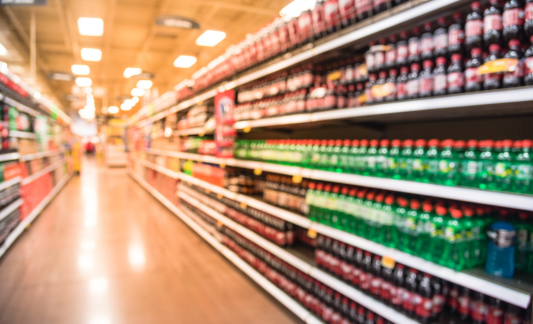Help Isom IGA recover from devasting floods

IGA CEO John Ross goes one-on-one in his second interview with Winsight Grocery Business VP of Content Meg Major, discussing the rise of discount grocers, adjusting our marketing and merchandising to better serve today’s shoppers, and the retail apocalypse myth. Read the adapted version below, and check out the full conversation at WinsightGroceryBusiness.com.
Our Winsight cover story this month delves deeply into the rise of discount grocery retailers. What do you make of their here-to-stay encroachment and how are you encouraging IGA’s indies to compete?
John Ross: I think the heart of this question is about understanding and serving shoppers. If you are a low-income shopper who is unable to afford to shop a Whole Foods, then your best option is to shop a discount retailer, sometimes under duress. We saw this happen during the Great Recession. As the economy improved, shoppers whose economic fortunes improved with it had acquired firsthand experience of the allure of heavy discounters, and research suggests that many shoppers kept them as part of their regular shopping arsenal. On top of that, shoppers became very smart and very informed with the rise of information that allowed any shopper to be infinitely smarter about what’s going on at retail. And in this environment, we retailers need to be smarter, too, by adjusting how we market and how we merchandise to make sure we’re serving today’s shoppers. The smartest retailers are using low opening price points on commodity and high-demand products and a combination of sale items and digital coupons to keep value shoppers in their stores. The payoff comes with loyalty, a rise in incremental baskets, and increased shopper trips. And it also allows you to have a much deeper relationship with that shopper because you’re serving all of their needs. It’s an enormous opportunity for the independent.
What strategic initiative are you pushing the hardest with IGA’s operators?
We have an obligation to serve our neighborhood. And in that neighborhood, there are some shoppers that require discounts, and there are others that view the thrill of the discount as part of how they’re wired, so they’re excited, regardless of their income. Independents must embrace the obligation to serve their neighborhood, which requires figuring out how to serve low-income customers, high-value customers, and high-service customers.
First off, low income shoppers often pay the highest prices for everything they buy, including groceries. In our industry, low income consumers are 70 percent less likely to use manufacturer coupons, for example, most likely because newspapers that serve those shoppers' neighborhoods often don't carry the weekly coupon section. That's why it's so important for IGA retailers to find new ways to get those branded savings down to their shoppers.
Knowing that brands are rapidly switching their marketing investments from trade to digital media, IGA has launched its first national digtal ad to make sure IGA independents don't miss out CPG savings their shoppers will love, and that every IGA shopper has access to the savings they need. Now we’re up to 13 million shopper impressions and growing, which means we’re reaching really sizable audiences, and our CPG partners recognize that we can really drive business.
Aldi is a pacesetter in areas deemed important by today's consumers. How much of an influence do you see the brand having on the remainder of the top grocery banners?
You have to give a ton of respect to an international retailer like Aldi that’s come to the United States and figured out a way to grow and thrive and prosper. If you look at Aldi’s stores today versus what they were a few years ago, they have changed dramatically. And they do—and have done—what great retailers always do: They humbled themselves in the face of the American shopper, they paid attention to what was important to them, and they figured out a way to adapt their European model to our marketplace in a way that’s helping them to grow--but also reeking havoc with opening price points at retail.
Do you believe online is a supplement or a replacement for in-store shopping?
I don’t think the shopper is making any distinction in their mind between in-store, pickup, and delivery. To them, it’s all shopping and they’re making choices about what’s the most efficient way in order to get the products that they need. And they are proving they want to move seamlessly between what are to us two very different channels. They want to move seamlessly in a way that fits their needs by day, by hour, and by occasion. And the retailers that approach it with an attitude of, “My job is to get the product to you the way you want it. You tell me what you want and I’ll figure out a way to deliver it,” are the ones that are building integrated solutions--and shoppers are responding with increased loyalty and a dramatic increase in average baskets.
What do you make of the so-called retail apocalypse, including how it relates to IGA’s base?
The retail apocalypse is a great headline, but the data doesn’t bear it out. And it frustrates me when we as an industry use this language that’s self-defeating. If you look at the changing demographics and what shoppers want, it’s higher service, prepared meals, experience in their store that makes them feel like part of a family, and people who care about their health. Today’s shoppers’ needs and expectations play right into independents’ sweet spot. So I believe this is an independent renaissance—not an apocalypse.
LIGHTNING ROUND
What’s the most unusual thing you know how to do?
I can do the auctioneer patter.
Excluding your car and mobile devices, what’s the most useful thing you own?
Pets.
What was your favorite childhood TV show?
Flipper.
You May Also Like
These Stories on From the Desk of
Jan 7, 2026 3:20:24 PM |
5 min read
Dec 18, 2025 9:32:36 AM |
3 min read
Dec 10, 2025 4:57:50 PM |
1 min read


No Comments Yet
Let us know what you think